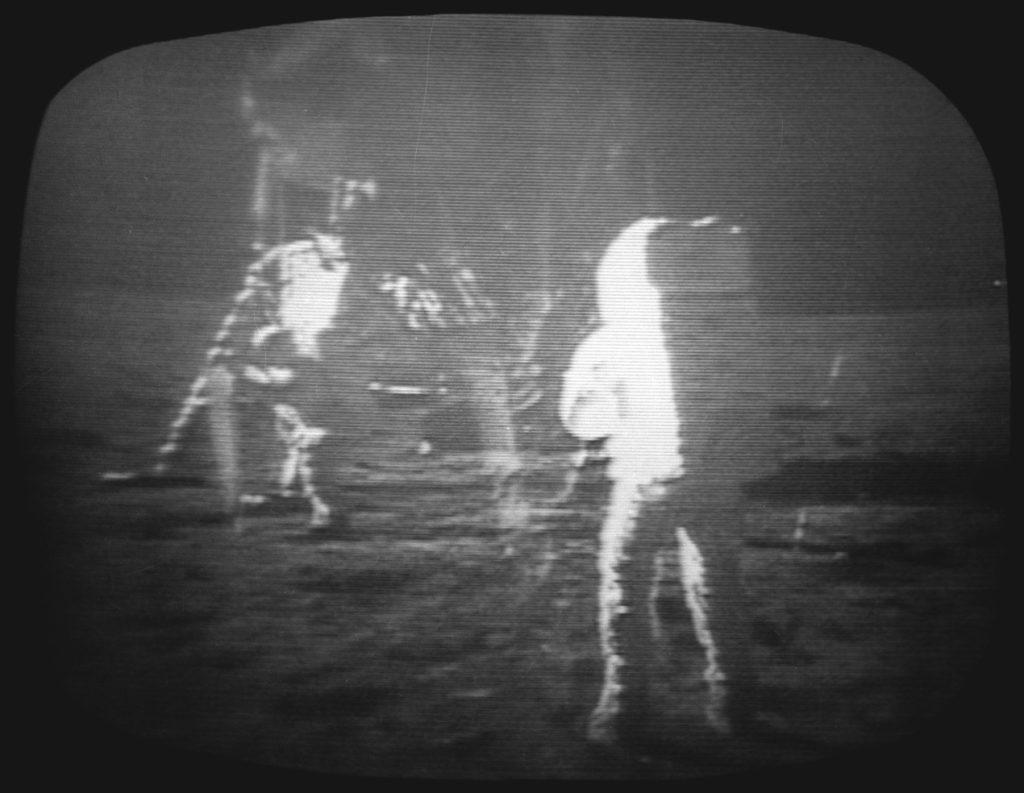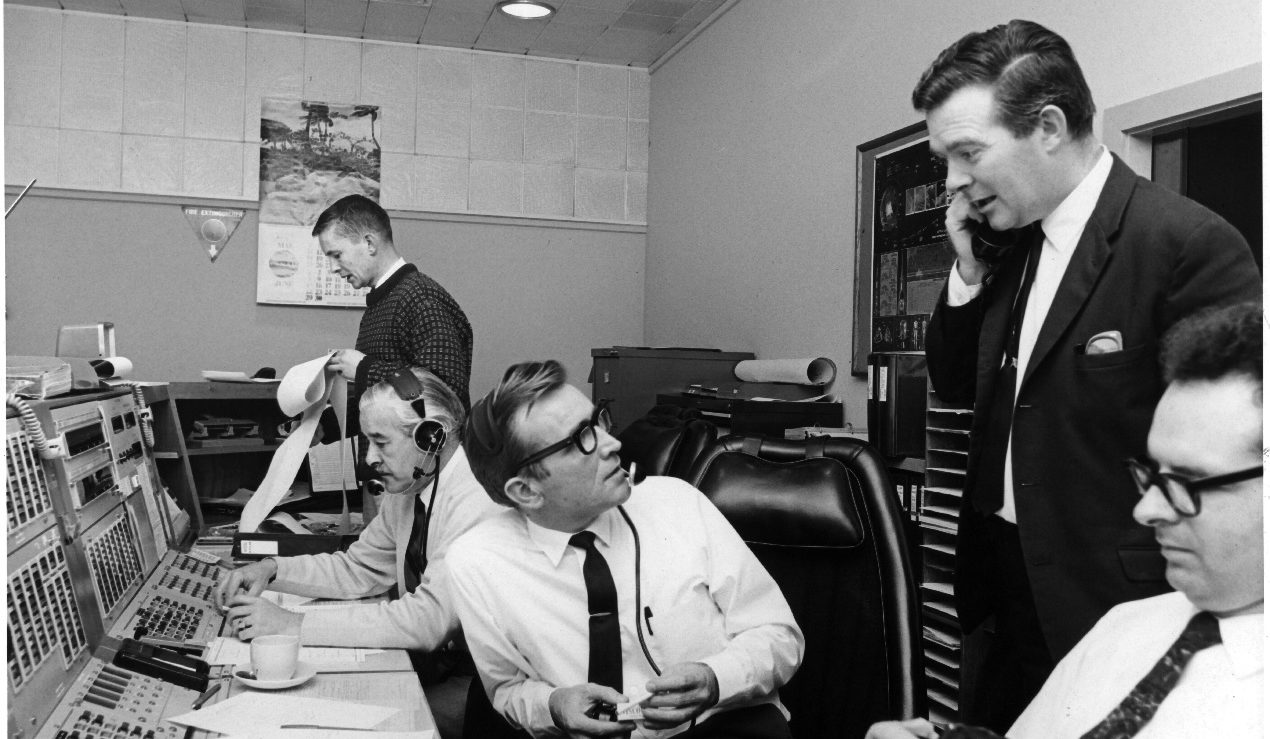When he was growing up in Bradford in the 1940s, Mike Dinn’s father was a wool salesman, travelling around the area with his samples from the local mills. Perhaps that’s what fired the young boy’s interest in engineering and electrics.
“Everything was analogue – switches and dials – and we needed several back-up systems.”
“We had the benefit of a car because of my father’s job, and that was unusual in those days,” says Dinn, now 86, from his home near Canberra, Australia. “So I used to take an interest in that and how it worked.”
Or perhaps it was the Meccano set he found under the tree one Christmas morning at the family home in the city’s Little Horton area. Or maybe the electric train set he received on another occasion.
“To be honest, I’m not sure what it was that started it all off,” says Dinn. “Certainly, my parents had no background in that sort of thing. But somehow I got an enthusiasm for the topic, and I was away.”
Whatever fired Dinn’s interest in electrical engineering, it was to take him to the frontline of history and a pivotal role in Nasa’s epoch-making Apollo 11 Moon landing half a century ago. Everyone has seen the footage of Neil Armstrong taking his first step on to the surface of the Moon in the early hours of 21 July. Millions watched it happen. And that was thanks to Dinn.
When Armstrong made his giant leap for mankind, Dinn was deputy director of the Honeysuckle Creek tracking station near Canberra, a facility boasting an 85ft dish turned to the heavens. He had been there since 1967 and the site was part of Nasa’s manned spaceflight network.
Together with similar stations in Madrid and California, Honeysuckle Creek was part of a network that offered continuous, overlapping contact with the Apollo 11 mission. No matter how the Earth turned or where the Moon was in its orbit or at what point on its flight Apollo 11 was, at least one of the three stations would have a direct link with the mission. And when Armstrong put his boot into the lunar dust of the Sea of Tranquility at 2.56am GMT on 21 July, it happened on Dinn’s watch.
“It was very pleasing, the highlight of my career,” he says disarmingly. But while the world was holding its breath as the pictures from the Moon were relayed across the world from Dinn’s control suite, he and his team of 25 couldn’t just sit back and enjoy the spectacle.
He recalls: “One had to keep one’s eye on the ball and focus on the job at hand. We had a big team all operating specialist equipment, and though we all knew we were playing a vital part in the mission everyone had to concentrate on their own part so we didn’t really have the luxury of stepping back and watching the show.”

Throughout the mission, Dinn’s team was responsible for sending communications up to Apollo 11 and receiving data back down, and relaying it all to mission control in Houston. They would patch through voice comms and send instructions to the spacecraft’s systems, and receive telemetry on how the craft was bearing up to the rigours of space, and biomedical data on the astronauts themselves.
It’s often said that today’s mobile phones have more computing power than was used to send Apollo 11 to the Moon, but Dinn had no actual computers to help with the job at Honeysuckle Creek. “We had a bank of lights and meters showing us what was happening,” he says. “Everything was analogue – switches and dials, not computers – and we had to have several back-up systems, plans B to D at least, in case plan A went wrong.”
Dinn studied for an electrical engineering degree at Bradford Technical College from 1951 to 1955. After graduating, he did an apprenticeship, working on airborne radar, with EMI Electronics in Hayes, near London. In 1959 he returned to Bradford. He had married a local girl, Trudy Walsh, and joined English Electric’s aircraft equipment division in Thornbury. He’d barely been there a year when he was offered a temporary contract with the Australian Air Force, working on aircraft testing. It was a big move for Dinn, his wife and their two small children, but they decided to do it for the three-year duration of the contract.
From there he was offered the job at the lunar tracking station, and though he says he was “dropped in the deep end” with this new discipline, by the following year he became deputy director, right as the race for the moon stepped up in earnest.
“It was a hugely exciting time for space travel, but I was in my mid-thirties and I took things as they came. The Apollo missions were just getting going and the first one I was involved with was Apollo 7, which was the first test of a command module in orbit. Then Apollo 8 was a quite dramatic mission as it was the first test of a module actually circling the Moon. That was the mission when we at Honeysuckle Creek really came into our own. And then, of course, the next logical step was to quickly move towards getting a manned mission to land on the Moon.”
But Dinn’s association with the Apollo programme didn’t end with the Moon landing. He was also in the hot seat for the ill-fated Apollo 13 mission, which had to be aborted when an oxygen tank exploded on the spacecraft. He was preparing for his shift as Honeysuckle Creek came online to take over the comms with the mission when he heard the fateful words over the speakers: “Houston, we have a problem.”
He says: “We provided the comms for the next eight to 10 hours, and that was a hugely challenging day.”
Dinn retired in 1994, and was awarded public service medals by Nasa in recognition of his contributions. Still living with Trudy and their ever-growing wider family, he knows that giant leaps for mankind do not happen at the hands of individuals. “I was the leader and the orchestrator of what we did, but everything was a team effort.”
Like the Big Issue North on Facebook




Leave a reply
Your email address will not be published.